In the Field with Graham Buston, Huntsman of the Blue Ridge Hunt
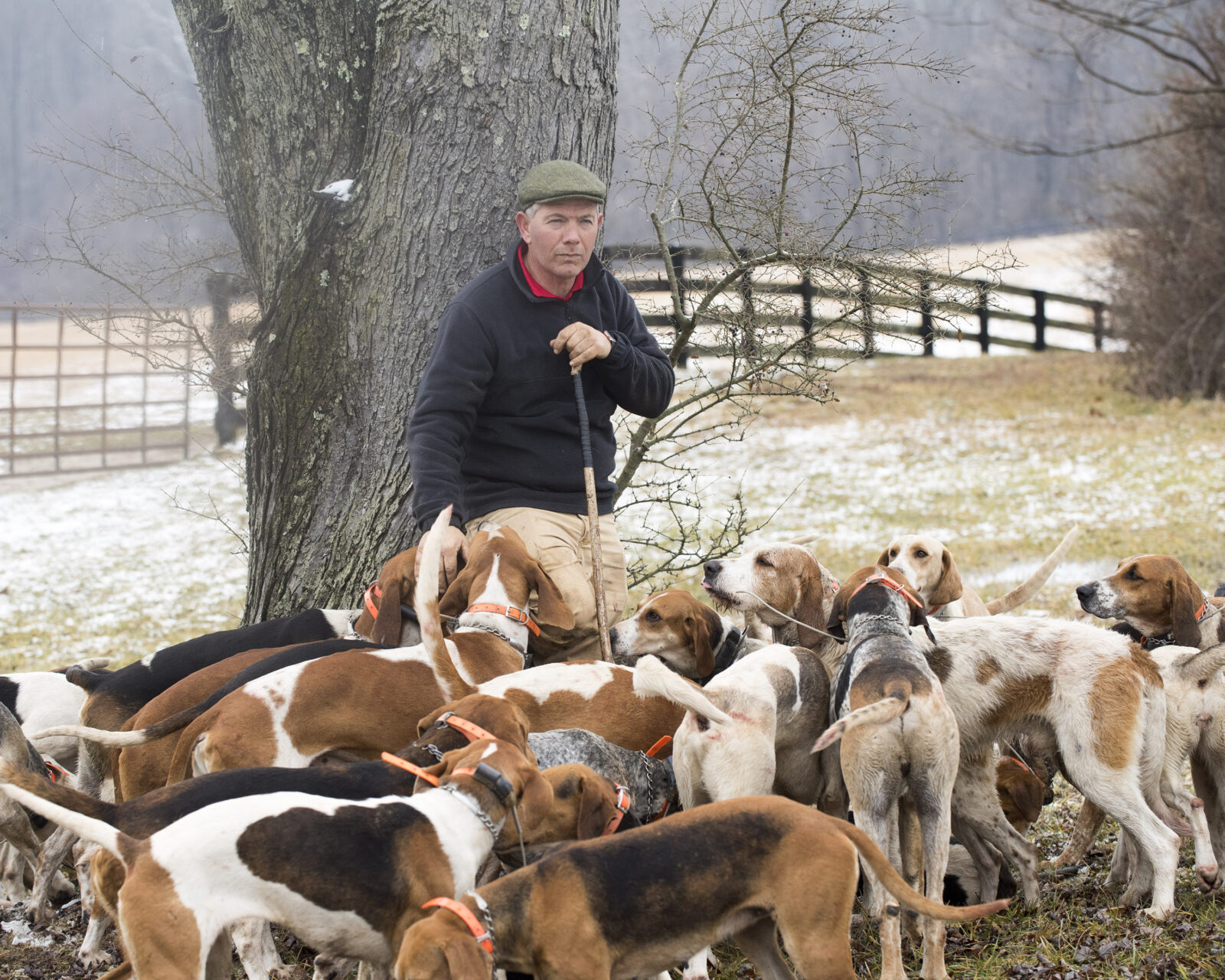
Written by Heidi Baumstark | Photos by Joanne Maisano
Mounted foxhunting has existed in America since the Colonial era. In fact, the earliest record of the importation of hounds was June 1650 when the private ship of an English gentleman, Robert Brooke, sailed into Baltimore’s port with his family and a pack of hounds. But long before, hunting with hounds as a formalized activity has its origin in England and Ireland beginning in the 1500s.
And one Irishman, Graham V. Buston, now makes his home in the Blue Ridge Mountains of Virginia, trading foxhunting in Ireland to be a huntsman for the Blue Ridge Hunt in Boyce, Clarke County.
Established in 1888, the Blue Ridge Hunt includes territory in Clarke and Warren counties and parts of West Virginia; it is the only hunt west of the Blue Ridge Mountains. British-born Archibald Bevan organized the Blue Ridge Hunt when he was 29 years old, and served as Master of Fox Hounds (MFH). Bevan boarded for a time at Carter Hall near the village of Millwood. His hunt saddle is now on display in the museum at the Clarke County Historical Association in Berryville.
Since 2015, Buston has been a huntsman of the Blue Ridge Hunt. Prior to that, he was a huntsman for the 2013 and 2014 seasons with Bear Creek Hounds in Moreland, Georgia. And before that, he was a huntsman for the County Waterford Foxhounds, the Stonehall Harriers Hunt, and the County Limerick Foxhounds in his native country, Ireland.
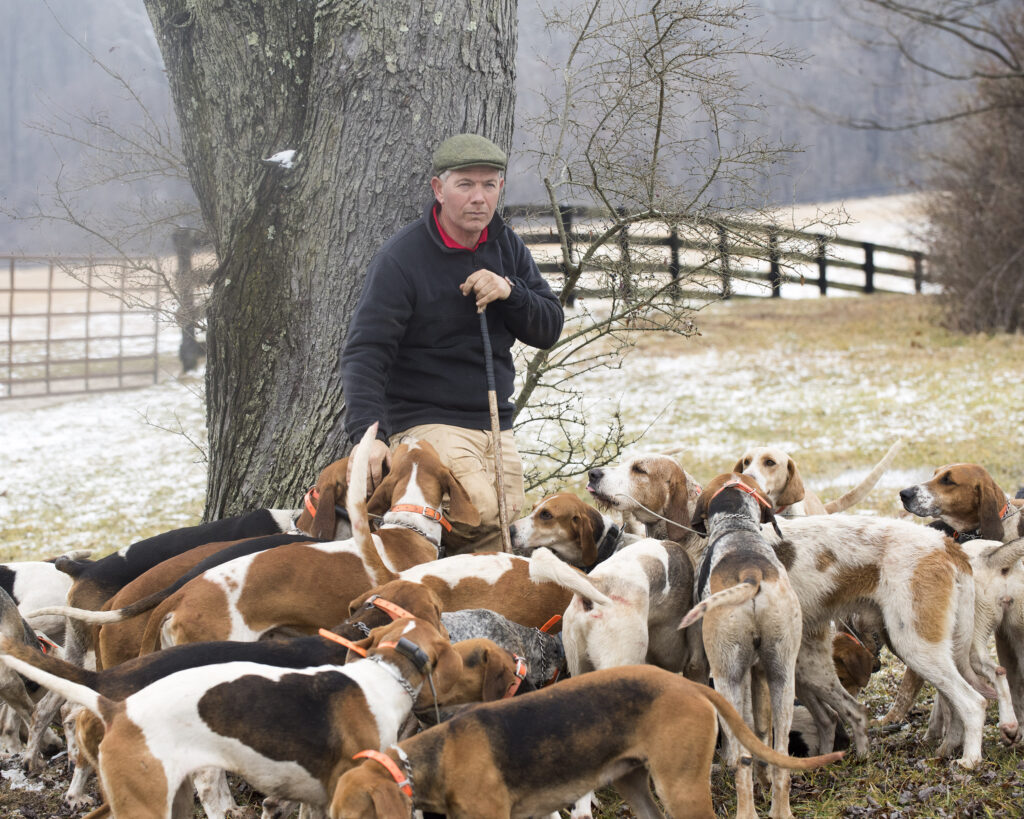
An Irish Lad Goes A-Hunting
Buston is from County Limerick, the southwest portion of Ireland; his hometown is Ardlaman. “I started foxhunting when I was 5 [years old] on my first pony with the local foxhound pack, the County Limerick Foxhounds,” Buston says. “I’ve been hunting for over 40 years. I was always interested in the hounds. My mom was second cook for Lord Daresbury [who was MFH from 1947-1977] of the County Limerick Foxhounds. I was always going over to Altavilla House where she worked for Lord Daresbury because he used to keep foxhound puppies from the kennels to be reared. I loved helping with the feeding and cleaning out of the puppies. I was very young, but loved hounds then, and it’s [what] started my interest.”
America Bound
Buston had a friend in Georgia who asked him to come to America “on holiday.” This led to a job offer as huntsman for Bear Creek Hounds beginning with the 2013 season. “It was a big move from Ireland to the U.S. I went from nice, damp weather to hot, humid weather.” He continues, “They loved my accent. I just had to talk really slow so they could understand me.”
Buston brought his wife and some hounds from Ireland with him. “I brought some of my Old English bloodlines and bred them with American foxhounds,” he explains. “I landed in a place where I knew nobody — and didn’t know the territory or the quarry — so I just tried it. It worked very well and was successful. I just stuck with what I knew.”
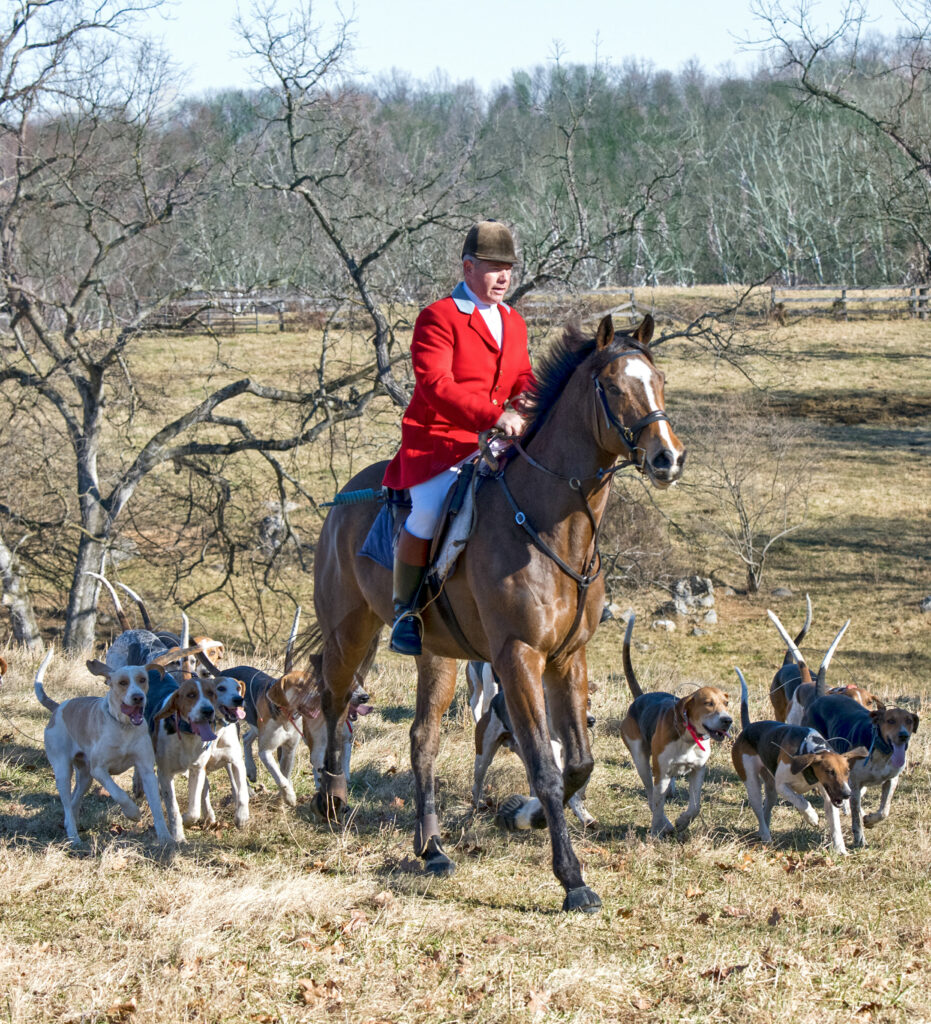
Onto Virginia
In 2015, Buston saw an ad for a huntsman for the Blue Ridge Hunt. He applied, even though he had only been to Virginia once when he came to the hound show in Leesburg as a huntsman with Bear Creek. A Blue Ridge Hunt Master contacted him for an interview. “They drove me around the countryside,” he remembers, “and I thought the territory was more like home with its rolling hills and stone walls, more of a farming community like back in Ireland. And I got along with the Masters right away.” Anne W. McIntosh has been Blue Ridge’s Joint MFH since 2006; Jeffrey L. LeHew has been Joint MFH since 2017. Buston is now entering his ninth season as a huntsman for Blue Ridge.
Buston started a new breeding program in Virginia with his hounds from Georgia and Ireland. “I mixed American blood with my hounds from Georgia — with the Old English bloodlines from Ireland — but knew I was missing something,” he explains. “So, I tried fell hounds, which are more of an athletic type that also have a good independence in them. I mixed Old English and American hounds crossed with fell hounds; with the combination of these three hounds, I hit the jackpot.” In Georgia, the hunting territory is mostly woods and flat lands, but in Virginia, the terrain is hilly, and hounds need to be able to jump the wire fencing since foxes can go through the small square wire fencing required to keep cattle inside the fields. Buston has 35 couples (70 hounds), and he and McIntosh are responsible for the breeding and training of the hounds.
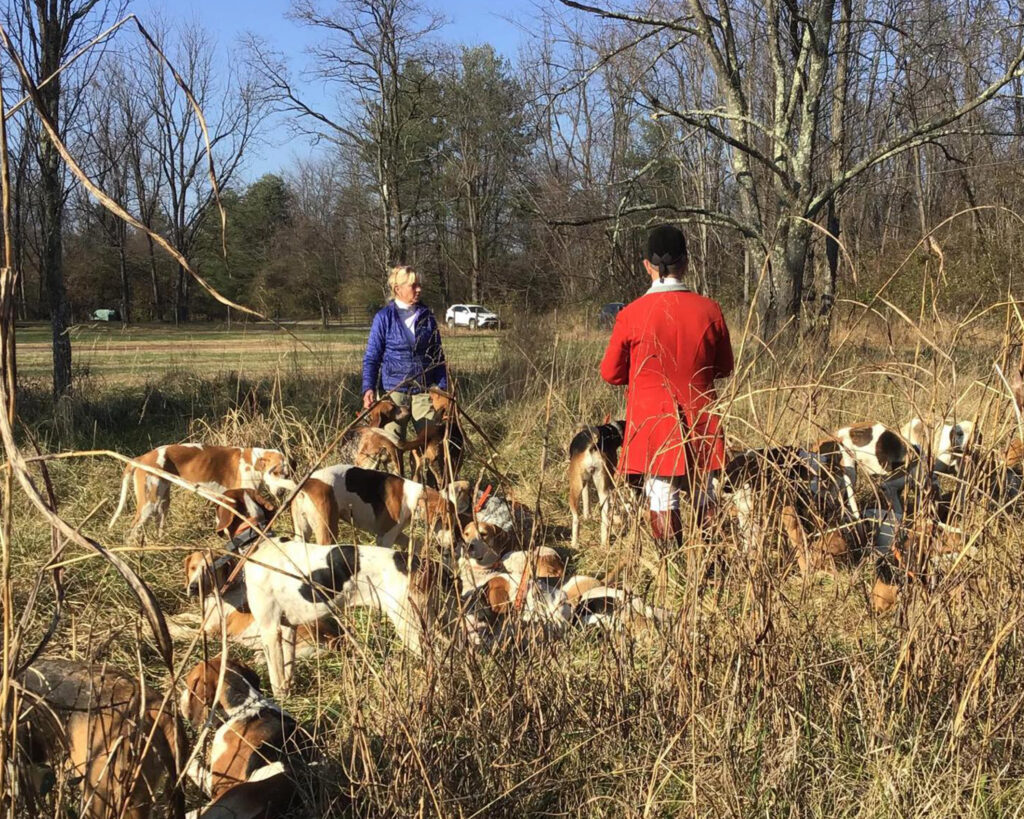
Buston’s dedication to his hounds has resulted in unforgettable hunt moments. One of the most memorable stories with Blue Ridge was in January 2021 in West Virginia at The Glenn. The story goes like this: “We were on a great coyote chase. The coyote continued his tricks to lose the hounds, and after an hour and a half he decided to jump into the cold running Shenandoah River with hounds in hot pursuit! Without missing a stride — as I watched the coyote swim upriver with hounds swimming behind him — I jumped off my horse, tore off my scarlet coat and boots, jumped in after my hounds, and started swimming. It wasn’t until I was swimming that I saw the hounds flowing down river and the coyote had started to turn toward the riverbank to me! Needless to say, I also turned toward the riverbank where I came from. I was so blinded with pride for my hounds that they had jumped in after [the coyote] that my excitement took over and I jumped in as well. The Field members and Masters all had seen me do it and had a good laugh by the time I came back with my hounds — and with a big smile on my face.”
Perhaps unsurprisingly, Buston admits, “One of my favorite parts as [a] huntsman is picking the dog and the bitch for breeding, whelping their offspring, training them, and watching them grow into hunting hounds.” Buston says, “I’m like the friendly schoolteacher!”
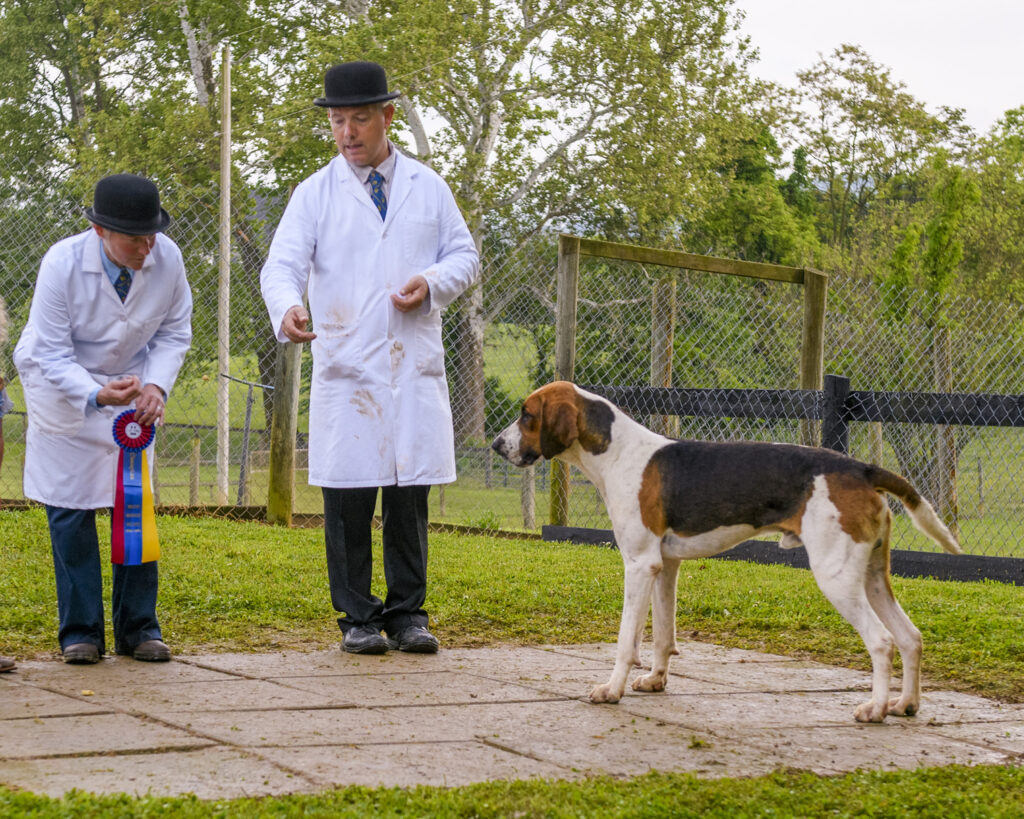
Another favorite part as a huntsman is seeing the fox and watching the hounds quickly follow the scent and work the line together, “especially on a hard scenting day,” he emphasizes. “I love seeing the work of the hounds. You put so much effort into breeding them and then seeing them hunt the scent of the fox as a pack; it’s rewarding.”
Reflecting on the beauty of Clarke County and his role as a huntsman, Buston says, “We look out every morning to mountains, fields, and can walk along the Shenandoah River. Our kitchen faces the kennels. When I turn on the light early in the morning the hounds see me, and they’re waiting for me. When the weather gets cooler, they get so excited. In exercise, they can smell the foxes and know it’s hunting season.” ML
Published in the November 2023 issue of Middleburg Life.








